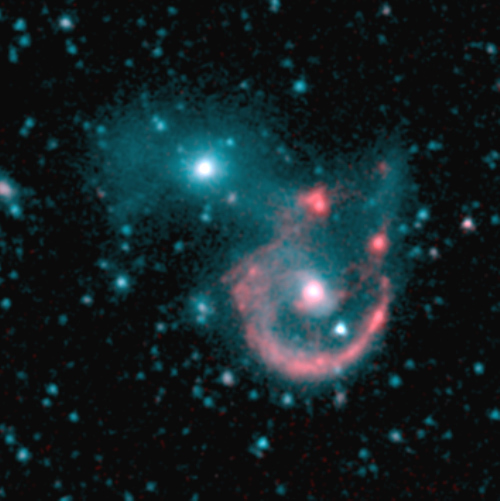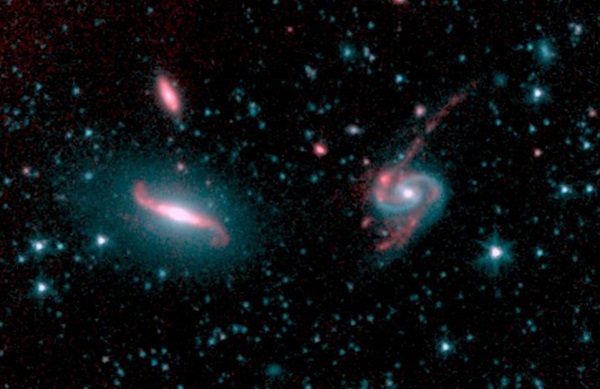Key Takeaways:
Colliding galaxies revealed dusty secrets to a team led by Beverly Smith and Mark Giroux of East Tennessee State University. Using the Spitzer Space Telescope in December 2004, the astronomers imaged interacting galaxies Arp 65 in Andromeda and Arp 107 in Leo Minor at two different wavelengths: 3.6 (blue) and 8 (red) microns.
“You can see differences between the old and young stellar populations,” Smith says. Younger stars haven’t strayed far from the dust-rich molecular clouds in which they formed and appear as clumps at longer wavelengths.
Emissions from polycyclic aromatic hydrocarbons (PAHs) dominate the 8-micron image. “We’re seeing emission from large molecules to small grains — anywhere from a few dozen to thousands of atoms,” Smith says. “These interstellar molecules produce strong emission at these wavelengths when hot, young stars heat them to temperatures up to about 1,300º Fahrenheit [730º C].”
The images carry clues to the star-formation process in these galaxies. “In Arp 65, we’re seeing blobs of young stars in the tidal tails. We’d like to understand why that’s happening,” she says.
For Arp 107, young star clusters form a Cheshire-cat-like grin. “When you go to 8 microns, it becomes a smile. These are regions of intense star formation, and as we go clockwise around the ring, there’s a progression of ages,” Smith tells Astronomy.
The galaxy collision at Arp 107 was more than a glancing blow, but something less than a direct strike. Smith describes the result as “something halfway between M51 and the Cartwheel galaxy.” This interaction created a distorted spiral density wave. The strongest compression has moved counterclockwise along the ring, so older clusters lie on the left side of the “smile,” younger clusters on the right.
Smith presented the images May 30 at the American Astronomical Society meeting in Minneapolis. The team has submitted a detailed analysis of the images to The Astronomical Journal.











